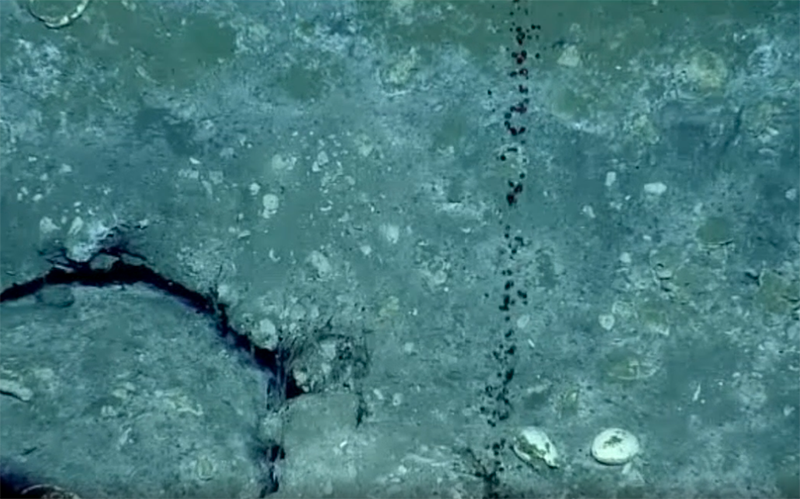May 23, 2022

A still image from Binbin Wang’s research into natural seeps.
It’s estimated that roughly 160,000 tons of oil and gas naturally enter North American waters each year. These so-called “natural seeps” are hydrocarbons that come out of plant or animal fossils under the seafloor. Depending on where they are, the bubbles of oil and gas can dissipate or, in more shallow spots, rise to the surface, sending methane into the atmosphere.
But how do they behave and impact surrounding water at the point they arise from the ocean floor? That’s what Binbin Wang hopes to find out.
Wang, an assistant professor in civil and environmental engineering, has received a grant from the National Science Foundation to develop an underwater imaging system to collect data and better assess how natural seeps impact their immediate environment.

Binbin Wang
“The project is technology development, so it’s really looking at advancement in terms of how we can quantify these natural seeps,” Wang said. “We want to see how big they are and how fast they rise. That initial information is important because we aren’t able to see them once they go into the ocean. It’s important to quantify the initial situation and parameters so we can predict it using a model.”
There are similar tools that measure natural seeps, but they require a lot of effort to deploy underwater robots and equipment and then process the information. On the flip side, researchers have tried to model the behavior, however that requires researchers to make a lot of assumptions, Wang said.
“We want to quantify them in a better way,” he said. “This project is to develop a tool that would be deployed from an underwater vehicle and left on the ocean floor over a couple of months to measure bubble flows and see how they change.”
Wang will develop new underwater cameras using tanks of water in his lab. The cameras will focus not only on the oil and gas seeps, but also on how those droplets and bubbles impact the flow of surrounding water.
The cameras will collect data and record images, allowing Wang to test which assessment process is most efficient.
“We can record images, retrieve them and analyze them later in the lab, or we can also use smart computer programs to process data immediately down there,” he said. “We’re trying to determine the best way to do efficient and effective data collection.”
Depending on his findings, Wang hopes to eventually collaborate with researchers to deploy the underwater technology in the ocean. That research would then provide data to build more accurate simulations and models to further the work.
Ultimately, this technology could help scientists better understand the behavior of natural seeps and how beneficial or harmful they are. While they can add greenhouse gas to the environment in very shallow waters, marine life depends on the oil and gas for energy in deep parts of the ocean where sunlight can’t reach. Some oil and gas bubbles may potentially lift nutrient-rich cold water from the bottom of the ocean to higher points, benefiting fish and other aquatic life.
In addition to the research, the grant has an educational component, including potential course development. Wang also envisions images from the research getting younger students excited about STEM.
“Kids are fascinated by the ocean,” he said. “You see the beautiful waves and water, but you can’t see all of the other things happening below the surface. By developing this camera system and getting it into the ocean, we can get a lot of vivid images of what’s going on down there.”
The NSF grant is through the Ocean Technology and Interdisciplinary Coordination program within the Ocean Science Division.
Work alongside engineers learning more about our environment. Study civil and environmental engineering at Mizzou!